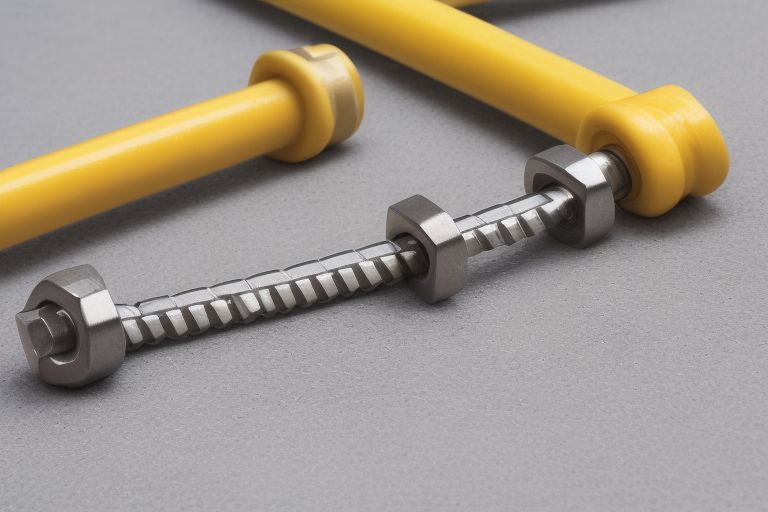Quick Links – The Strongest and Most Useful Connectors for Many Uses

Quick links are small but very strong connectors used in climbing, rigging, and many other tasks. These metal links have a simple screw lock design, making them easy to use and very reliable. Whether you need to connect chains, secure gear, or set up a safe anchor, quick links are a great choice.
Many people use quick links because they are cheap, strong, and long-lasting. They come in different sizes and materials like stainless steel and galvanized steel. Some are best for outdoor use because they don’t rust, while others are lighter and perfect for everyday tasks. If you want a strong and safe connection, quick links are the best option.
Table of Contents
What Are Quick Links and Why Are They So Useful?
Quick links are small metal connectors that help join chains, ropes, and other gear. They are strong, easy to use, and can handle heavy loads. Many industries use quick links because they are reliable and affordable. From construction to outdoor activities, they play a big role in keeping things secure.
People like quick links because they are simple and safe. With a screw lock design, they stay closed and do not open easily. They come in different sizes and materials, so you can choose the best one for your needs. Whether you need them for climbing, rigging, or repairs, quick links make work easier.

How Quick Links Were First Used – A Short History
The idea of quick links started many years ago with chain connectors. Workers needed a fast way to join metal parts without welding. Over time, manufacturers improved the design, making them stronger and easier to use. Today, quick links are common in many industries.
At first, they were used mainly in construction and marine work. Later, people realized they were also useful for sports, camping, and even home repairs. Now, you can find quick links in hardware stores, outdoor shops, and online. They continue to be a top choice for safe and easy connections.
Different Types of Quick Links and Their Uses
Quick links come in different shapes and materials. Each type is designed for specific jobs. Choosing the right one depends on how much weight it needs to hold and where it will be used.
- Oval Quick Links – Best for straight-line connections like chains and pulleys.
- Delta Quick Links – Used for harnesses and webbing where force comes from different angles.
- Square Quick Links – Ideal for keeping things aligned without movement.
- Stainless Steel Quick Links – Perfect for outdoor use since they do not rust.
- Galvanized Quick Links – A budget-friendly option for indoor and light-duty use.
Stainless Steel vs. Galvanized Quick Links – Which One is Better?
Stainless steel quick links are great for outdoor use. They resist rust and last for years, even in rain and salty air. If you work in marine or wet environments, stainless steel is the best choice.
Galvanized quick links are coated to prevent rust but are not as strong as stainless steel. They work well for indoor and temporary use. If you need a cost-effective option for everyday tasks, galvanized quick links are a good pick.
Best Quick Links for Climbing, Rigging, and Heavy Loads
Some quick links are made for extreme conditions. Climbing, rigging, and heavy lifting require extra-strong links. Choosing the right one is important for safety and performance.
- Climbing – Use high-strength, locking quick links that can support body weight.
- Rigging – Pick industrial-grade quick links that can handle high loads.
- Heavy Lifting – Ensure the quick link meets safety standards for load limits.
How to Choose the Right Quick Link for Your Needs
Picking the right quick link depends on what you need it for. Consider these factors before buying:
- Weight Limit – Check the load capacity to ensure safety.
- Material – Stainless steel for outdoor use, galvanized for light-duty tasks.
- Shape – Choose oval, delta, or square based on how the force is applied.
- Size – Ensure the quick link fits your chain, rope, or gear.
Are Quick Links Better Than Carabiners? Pros and Cons
Quick links and carabiners serve similar purposes, but they have key differences. Understanding their pros and cons helps in making the right choice.
Pros of Quick Links:
- Stronger and more durable.
- Secure screw lock prevents accidental opening.
- Suitable for long-term use.
Cons of Quick Links:
- Slower to open and close compared to carabiners.
- Heavier in some cases.
How to Use Quick Links Safely – Important Tips
Using quick links properly ensures safety. Follow these steps:
- Check the Load Limit – Never exceed the recommended weight.
- Close the Screw Lock Tightly – Prevents accidental opening.
- Inspect for Damage – Replace worn-out or rusty quick links.
- Use the Right Size – Ensure a perfect fit for maximum strength.
Can Quick Links Handle Heavy Weight? Strength and Load Limits Explained
Quick links are strong, but each type has a weight limit. Always check the manufacturer’s details to ensure safe use. Here are some common weight limits:
- Small quick links – Hold around 200 lbs.
- Medium quick links – Support up to 1,000 lbs.
- Heavy-duty quick links – Can handle 5,000 lbs or more.
Where to Buy High-Quality Quick Links for the Best Price?
Finding good quick links is easy if you know where to look. Consider these options:
- Local hardware stores – Good for quick purchases.
- Online retailers – Wide variety and better deals.
- Industrial suppliers – Best for bulk orders and heavy-duty options.

Conclusion
Quick links are useful, strong, and easy to use. They help connect chains, ropes, and other gear safely. Whether for climbing, rigging, or home repairs, they are a reliable choice. Choosing the right type ensures safety and efficiency.
Understanding quick links helps in picking the best one for your needs. With different materials, shapes, and sizes available, there is always a perfect option. Use them correctly and enjoy a secure connection every time!
FAQs
Q: Can quick links be used for climbing?
A: Yes, but only high-strength, locking quick links designed for climbing should be used.
Q: Do quick links rust?
A: Stainless steel quick links resist rust, while galvanized ones may rust over time.
Q: How do I know the weight limit of a quick link?
A: Check the product label or manufacturer’s specifications for the weight limit.




